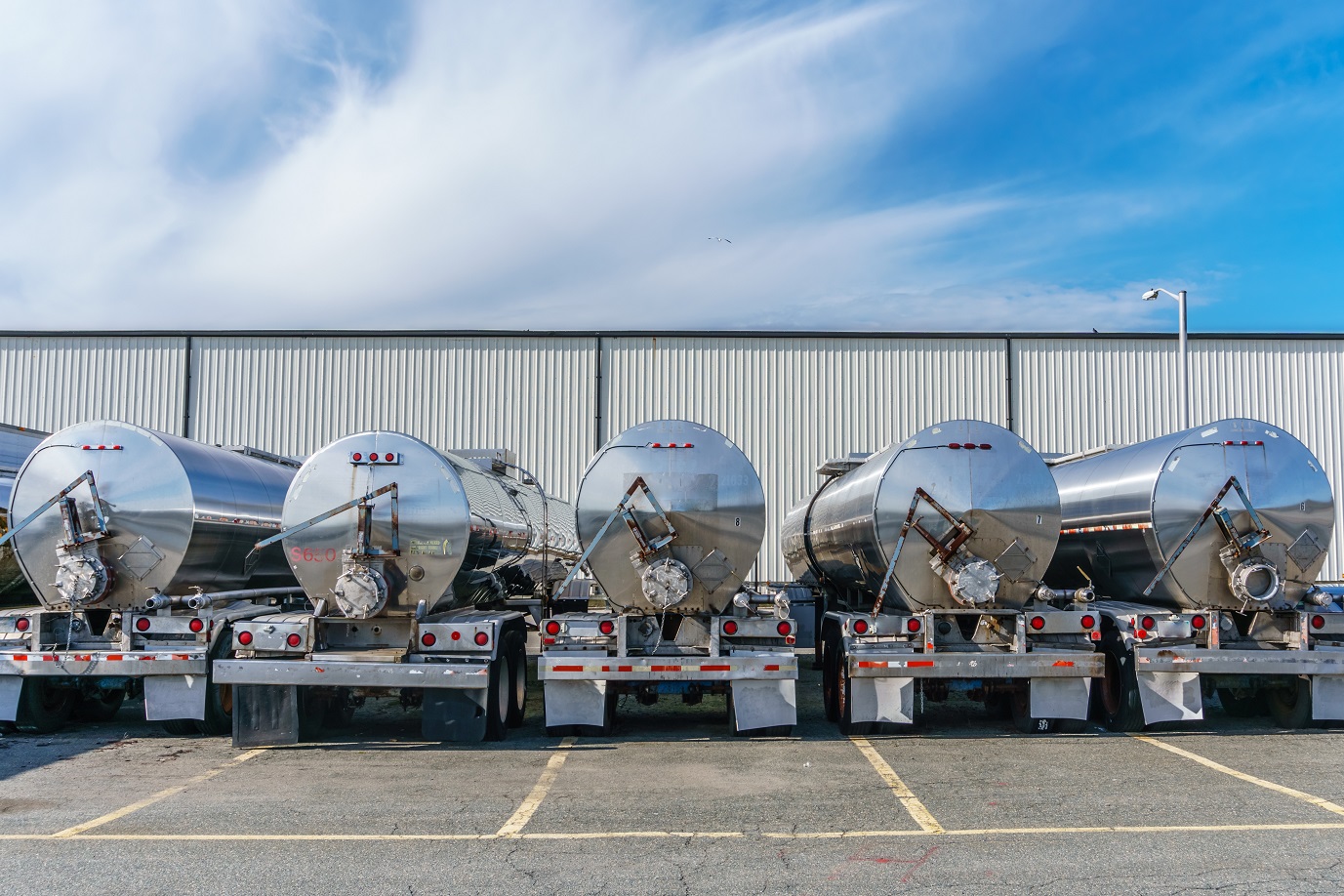Local Jurisdiction Fuel Planning Toolkit
The Energy Emergency Management Office has developed guidance to help public and private entities in the state of Washington estimate their fuel consumption in an emergency and develop a fuel contingency plan.
Planning Resources
- The Local Jurisdiction Fuel Planning Guidance (PDF) – explains how to develop an effective fuel plan based on your needs assessment. It lays out options for policies that could reduce your dependency on fuels, contains Washington State guidelines for allocation and distribution of scarce supplies, tips on how to train on the plan and a Template.
- Fuel Needs Assessment Tool (Excel) – walks organizations and agencies through assessing their dependency on fuel. It establishes a minimum requirement of fuel supply for maintaining your mission essential functions during a fuel shortage or other emergency.
- Local Fuel Plan Template (Word) – edit this template to draft your plan, then submit it to WA.EnergyEM@Commerce.wa.gov
- Local Fuel Plan Evaluation Checklist (Excel) – is for ensuring your customized plan is aligned with the State’s plan. Also contains helpful resources.
- Fuel Point of Distribution (FPOD) Site Selection Guidance (Word) Optional for Counties and Tribes – worksheet describes logistical and geographical considerations for pre-identifying locations where emergency fuels could be delivered, stored, and distributed to the public following a disaster.
- Fuel Planning Fact Sheet (PDF) – an executive summary for this planning project
Planning Guidance
The Local Emergency Fuel Plan you build based on this guidance is designed to dovetail with existing Business Continuity (BC) or Continuity of Operations (COOP) Plans. There are seven steps to creating a complete fuel plan. Follow this guide for an overview of how to get started.
Click here to access the full Fuel Planning Guidance pdf.
1. Create a Plan Outline & Develop Stakeholder Relationships
Creating a draft outline provides a working space for crafting plan drafts and assists with information organization.
Identify
The Draft Outline: Modeled after the Washington state Fuel Action Plan, the draft outline should resemble the structure below. Each section will be explored in depth.
- Preamble: A single page with a change log and plan adoption signatories, if necessary.
- Section 1, Authority
- Section 2, Planning Overview
- Section 3, Fuel Infrastructure & Assets
- Section 4, Fuel Needs
- Section 5, Nine Priority Actions
- Appendices
Stakeholder Relationships: Any emergency plan should include stakeholder input, and this is especially true for a Fuel Action Plan. Take a look at the WA Fuel Needs Assessment Tool for an idea of where to get started.
- In order to effectively implement the Washington State Fuel Action Plan during a petroleum shortage, having each county, tribe, city, and other special-purpose districts develop nested fuel contingency plans will be critical for implementation.
- Each organization’s fuel contingency plan must be developed in the context of, and be compatible with and complementary to each other across the state.
- Interact with partner agencies, critical infrastructure partners, and private sector partners to ensure all partners and their critical resources (e.g. employees, vehicles, contractors) have proper credentials to be allowed entry into impacted areas to perform essential lifeline services or services and/or restoration of critical infrastructure.
2. Identify the Goals and Parameters of your Fuel Contingency Plan
Developing the goals and objectives of a fuel plan helps to guide the rest of the document. Goals and objectives are guided by legal guidelines, mission essential functions and other actions that are vital for an organization to maintain during an incident.
Identify
Section 1, Legal Authorities: Any local, state or federal regulations or permanent laws from which a Fuel Action Plan can derive authority or guidance for action.
Section 2, Planning Overview:
- Scope: What type, magnitude, severity and duration of an incident does this plan address?
- Planning Assumptions: Does the plan make any assumptions about the scope of the incident, incident response or other capabilities?
- Goals: The overall purpose of a Fuel Action Plan.
- What is the impact on my organization’s want to mitigate that loss?
- What does my organization’s fuel contingency plan seek to accomplish?
Mission Essential Functions: Functions that are essential to the lives, health, welfare, and safety of the public that are addressed in the plan.
- Does my organization conduct mission essential functions essential to the lives, health, welfare and safety of the public impacted by an emergency and that must be sustained during emergencies?
- Of all the mission essential functions that must continue during an emergency, which have a fuel dependency?
- Which mission essential functions can be allowed to continue operating at a reduced rate?
- Are there other functions that need to continue during fuel shortages to preserve the market share and reputation of my organization?
- Which of my business activities can be suspended throughout the duration of a fuel shortage without long-term damage to my business?
Plan Maintenance: It is essential to maintain a planning document via training and exercising as well as document review. Typically plans are evaluated by document review and gap analysis every several years, with necessary revisions and stakeholder engagement incorporated into the process.
- How often can my organization train and/or exercise this plan?
- How often can my organization fully evaluate this plan?
3. Fuel Infrastructure & Assets
 A comprehensive look at physical fuel infrastructure, contractual agreements and other related items helps maintain awareness regarding fuel capabilities and possible roadblocks. Utilize the WA Fuel Assessment Tool to support documentation of information, and the Fuel Point of Dispensing (FPOD) identification tool to support planning efforts.
A comprehensive look at physical fuel infrastructure, contractual agreements and other related items helps maintain awareness regarding fuel capabilities and possible roadblocks. Utilize the WA Fuel Assessment Tool to support documentation of information, and the Fuel Point of Dispensing (FPOD) identification tool to support planning efforts.
Identify
Physical Structures: Identify physical fuel infrastructure that supports your organization’s fuel needs, including but not limited to the items listed below.
- What is my onsite fuel storage capacity and capability? How much fuel is routinely maintained in these tanks?
- What is the onsite fuel capacity? (Based on minimum maintenance volumes, not storage tank capacity).
- What are my organization’s relevant Fuel Point of Dispensing (FPOD) locations?
- What are the primary transportation routes to and from the FPODs identified?
Existing Agreements: Any and all contracts, agreements, MOUs, etc. relevant to your organization’s fuel supply.
- Does my organization have established emergency fuel agreements/contracts with local fuel distributors and fuel terminals?
- For onsite fuel, what are the existing replenishment intervals? Are there any requirements for vendors to deliver during times of emergency? Include any additional information important to your organization.
- If your organization contracts with large-capacity retail providers, would emergency contracts be feasible in order to support emergency operations and public needs?
4. Determine Fuel Needs
Use the State of Washington Fuel Assessment Tool to support documenting and collecting required information, and the fuel point of dispensing (FPOD) identification tool to support planning efforts.
Identify
Fuel Needs for Mission Essential Functions (MEFS): Develop the most comprehensive understanding possible of how much fuel your organization would need in order to address your mission essential functions.
- What critical assets (vehicles, equipment, critical components [batteries], etc.) does my organization use to support mission essential functions? Do we have emergency replacement sources?
- To what extent will my organization’s assets be available during an earthquake or other hazards present in my location?
- What different types of fuel does my organization use to support mission essential functions?
Fuel Prioritization: When fuel supplies are low, your organization may need to prioritize fuel usage for critical tasks only.
- Is it possible to reduce or eliminate non-mission essential functions without irreparable long-term harm to our reputation?
- Does my organization’s emergency fuel contract provide prioritization on fuel allocation?
- What are the state emergency plans? How will the state prioritize fuel?
5. Write the Plan
 To ensure consistency in the State’s collective response to fuel emergencies the State has developed Nine (9) Priority Actions and Priority Guidelines for Fuel Allocation that should be implemented in all of the nested plans (state agencies, tribes, counties, cities, special purpose districts, etc.), these are provided in the 2020 Washington State Fuel Planning Guidance document (ADD LINK).
To ensure consistency in the State’s collective response to fuel emergencies the State has developed Nine (9) Priority Actions and Priority Guidelines for Fuel Allocation that should be implemented in all of the nested plans (state agencies, tribes, counties, cities, special purpose districts, etc.), these are provided in the 2020 Washington State Fuel Planning Guidance document (ADD LINK).
Actions
- Establish detailed standard operating procedures (SOPs) for each activity you expect to be conducted while your fuel contingency plan is in effect.
- Identify mechanisms for accessing situational awareness information with the State and other regional partners.
- Identify various communication strategies that are being employed for disseminating important information to all stakeholders.
- Consider using Washington state’s Nine Priority Action Items as an organizational structure for the operational section of the plan.
The actions are the following:
- Action 1: Notification, Activation and Authorities
- Action 2: Situational Awareness and Information Coordination
- Action 3: Damage Assessments
- Action 4: Assessment of Fuel Needs and Determination of Priorities
- Action 5: Outside Assistance
- Action 6: Fuel Conservation Measures
- Action 7: Temporary Waivers
- Action 8: Fuel Allocation
- Action 9: Recovery
Note: Not all nine actions must be activated during a fuel supply incident. For example, outside assistance may not be necessary in all cases.
6. Distribute, Train and Exercise the Plan
 Once the fuel plan is finalized, the document should be distributed to stakeholders to ensure ongoing plan alignment. Personnel should receive training on their expected role, with additional exercises testing the capabilities of the planning document.
Once the fuel plan is finalized, the document should be distributed to stakeholders to ensure ongoing plan alignment. Personnel should receive training on their expected role, with additional exercises testing the capabilities of the planning document.
Actions
Plan Distribution: Distributing a written plan to personnel and stakeholders allows for transparency with your organizational goals and objectives, and leads to better plan alignment between organizations and jurisdictions.
- Your plan must function in coordination with other nested plans that will be put into effect and must function with the private sector partner plans in anticipation of or during an emergency or in response to disruption to normal conditions.
Train on the Plan: Ensure all employees understand what is expected of them in implementing the fuel plan.
- Consider training that might be necessary for all employees to be comfortable with their assigned roles and responsibilities.
- Cross-train employees to ensure the availability of trained personnel to conduct activities.
Exercise and Refine the Plan: Conduct periodic exercise of your plan, both internal to your organization and with external partners, establishing mechanisms for receiving feedback from all participants.
- Conduct a variety of exercises if your organization is able to. Types include tabletops, drills, functional exercises and full-scale exercises.
- Whenever possible, include the private sector and special purpose districts (e.g. utilities, airports, etc.) as stakeholders to enhance participation and plan refinement activities and effectiveness of your plan.
- Engage with private sector companies that provide resources and critical support to the success of your plan to periodically evaluate plan compatibility.
- Use the experiences of exercising your plan to make modifications or refinements following established “management of change” procedures, and distribute the resulting amended plan to employees and external partners.
- Schedule exercises of your plan after any modification or fundamental business practices or infrastructure modification.
In addition to necessary updates indicated by exercise, review and update your fuel contingency plan at least every 3 years or when there have been changes in core functions or operations that would affect fuel usage.
7. Further Development
 Consider refining and expanding your fuel contingency options by modifying operational practices or by introducing the options presented below.
Consider refining and expanding your fuel contingency options by modifying operational practices or by introducing the options presented below.
Actions
Reduction of Fuel Demand: Reducing the need for fuel by addressing mission essential functions or all functions fuel needs could be a permanent change, or be a temporary change made effective only during fuel shortages.
- Determine how a reduction in fuel demands for continuing mission essential functions could be achieved through efficiency improvements while still satisfying that function’s purpose.
- Consider whether individuals responsible for conducting mission essential functions will be available during and in the aftermath of a severe weather event or another emergency.
- Determine whether assets (e.g. vehicles, equipment, supplies, fuel reserves) essential to the conduct of mission essential functions are likely to be available during an earthquake and other hazards present in your location.
Modification of Operational Practices: Incorporation of fundamental changes to operational processes, including installation of additional infrastructure, new contracts or agreements with fuel vendors or other organizations to improve priority access to fuel during shortages, or other approaches.
- Determine if there is an opportunity to transition emergency backup power to renewable resources – to reduce the dependence on petroleum products during an emergency.
- Consider a policy that requires a minimum amount of fuel to be present in onsite storage tanks at all times.
Contact
We are always standing by to take questions and comments about this guidance.
If you have questions or would like us to come speak to your organization about this fuel planning effort, please email us at WA.EnergyEM@Commerce.wa.gov.



